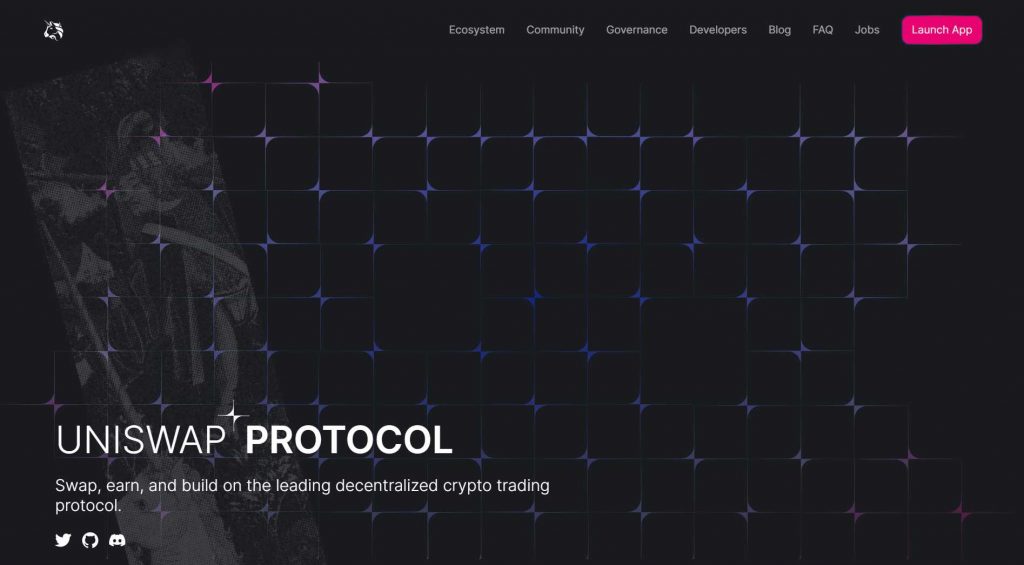Everything You Need to Know About Uniswap
One of the decentralized Ethereum-based exchanges where traders may swap ERC20 tokens without waiting for the buyer or seller is Uniswap. Since it’s built on Ethereum, Uniswap does not support tokens from other blockchains. Uniswap operates with the assistance of unicorns, as the name implies. Let us know more about what is Uniswap and how it works.
What is Uniswap?

Uniswap is an open-source software program that offers services comparable to traditional exchanges. The sole distinction is that a centralized authority doesn’t govern it. Uniswap provides trading opportunities for various crypto assets by utilizing a collection of liquidity pools. Platform members can lock their assets to participate in these liquidity pools.
A portion of the trading cost is distributed to these members as compensation for maintaining liquidity in these pools. If their product is built on Ethereum, developers can list their tokens on Uniswap.
Furthermore, a liquidity pool for traders for the cryptocurrency they intend to offer on the exchange is required. Uniswap doesn’t charge listing fees, unlike typical exchanges.
Uniswap history
Uniswap’s founder, Hayden Adams, released this project in November 2018. Hayden Adams began working on this project in 2016 after being inspired by Vitalik Buterin, co-founder of Ethereum. The Ethereum Foundation also contributed $100,000 to this project.
In 2020, Uniswap v2 was released, allowing users to swap different tokens on Ethereum. Those that completed a transaction on the network before the introduction received 400 UNI tokens as an airdrop from the protocol. More awards were given to those who contributed more liquidity to the protocol than others. Uniswap has grown steadily to become the biggest decentralized exchange in terms of trade volumes.
What Makes Uniswap Unique?
There are other decentralized exchanges in the crypto world besides Uniswap. Some others include Sushiswap, PancakeSwap, and more. The thing that makes Uniswap stand out is that it uses a “Constant Product Market Make Model,” a way to set prices that accurately shows how much different tokens are worth.

Instead of putting together buyers and sellers, Uniswap uses a constant equation (x * y = k) to figure out the value of a token. If a user wants to make a liquidity pool, they can add the same number of ERC20 tokens and ETH tokens they are willing to add. The number of tokens in the pool is used to figure out the price.
For instance, if a user buys MATIC tokens from the pool, the number of MATIC tokens in circulation will go down, and the price will eventually go up. At the same time, the price of ETH tokens will go down because there will be more of them. So, on Uniswap, the price of tokens changes every time a trade goes through.
If the project is already on Ethereum, it’s easy to list a token on Uniswap. If there isn’t already a liquidity pool for an ERC-20 token, it’s easy for users to make one. On this platform, each token has its own smart contract. Once a liquidity pool is set up, users can trade or add to it if they want to.
How Does Uniswap Work?
Uniswap is made up of a group of smart contracts that hold reserves of liquidity. The liquidity reserves are kept up by the people who hold ERC-20 tokens. The people who own these tokens put an amount equal to two tokens in the liquidity pool. Depending on what they need, the other users can trade these assets.
When buyers trade one token for another, they have to pay a small trading fee. 0.3% of this fee goes to liquidity providers as payment for their help. Either an ERC-20 token and ETH or two ERC-20 tokens can be put into the liquidity pool. The system makes liquidity tokens based on how many tokens a liquidity provider puts into the system.
The users can turn these tokens in anytime to get their money back. If there is a pool of ETH/MATIC, Uniswap multiplies the amounts of these two assets in the pool to figure out how much money is in the pool as a whole. The whole project is based on the idea that the total liquidity must stay the same.
What is UNI Token Used for?
UNI is Uniswap’s native coin, having a market cap of $6.7 billion and a circulating supply of 689 million tokens. There are a total of 1 billion tokens available. The remaining 31 million tokens will be dispersed over the next 3-4 years to investors and community members.
Trading fee
Users that switch tokens on Uniswap must pay a set number of UNI tokens as trading fees based on the size of the tokens they are swapping. 0.3% of the trading charge is passed to the pool’s liquidity providers.
Governance
Holders of UNI tokens have voting rights as well. It means they can vote on specific project developments. They can also provide new ideas for the platform’s development.
How to Use Uniswap?
Users must register an account on Uniswap and link it to any Ethereum-supported wallet, such as Trust Wallet or MetaMask. They can then enter the names of the tokens they want to trade and press the swap button to complete the transaction. They can then confirm the transaction by going to their wallet.
The transaction may take some time to complete depending on the status of the Ethereum blockchain since the transaction must be updated on the blockchain.
Conclusion
In terms of trade volume, Uniswap is the leading decentralized exchange. It provides a trading platform for tokens released on the Ethereum network. It also gives those who contribute to the liquidity pools the opportunity to make money.



